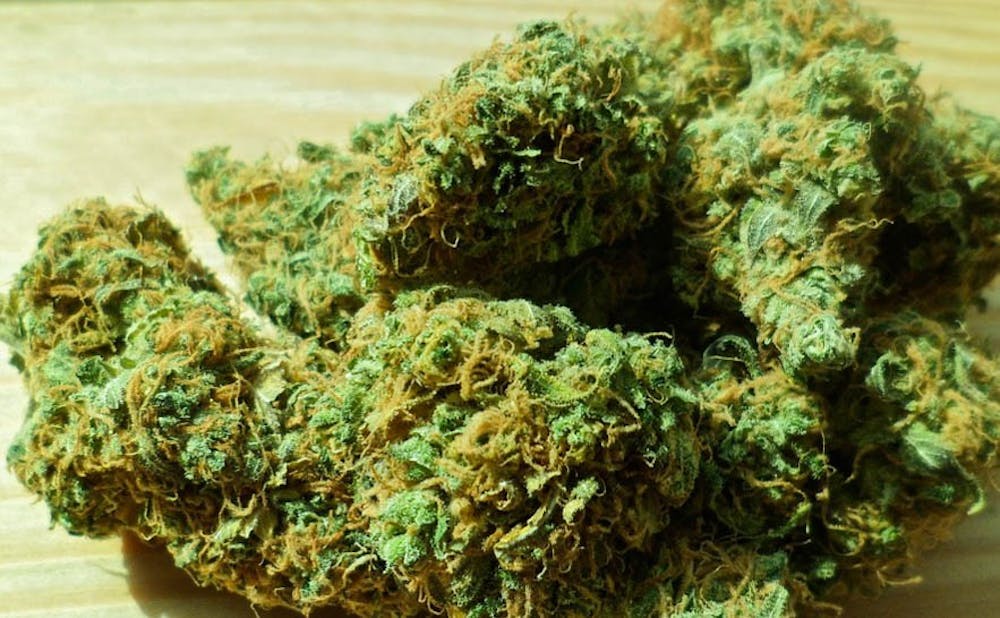Anxiety disorders in childhood and late adolescence can be a risk factor for problematic marijuana use in early adulthood, according to new research from Duke Health.
Researchers at the School of Medicine analyzed data from the Great Smoky Mountains Study, which began in 1993 and followed children from the Appalachian Mountains in western North Carolina from age nine until their 30s. The researchers found that three quarters of study participants did not develop problematic cannabis use during early adulthood. However, the one quarter that did had distinctive risk profiles.
Lead author Sherika Hill, an adjunct faculty associate in the department of psychiatry and behavioral sciences, wrote in an email that her team was intrigued by one group of adults who developed cannabis dependencies in their late twenties and early thirties, despite not habitually using cannabis in their teen years.
“Because much of the existing literature on cannabis use focuses on adolescent users, early users—[those who begin before age 15]—or those who are chronically high users throughout their lifetime, this distinct population of users with delayed problematic use patterns had been overlooked,” Hill wrote.
The quarter that developed problematic use were grouped into three profiles—limited, persistent and delayed users. Hill added that with the legalization of marijuana in many states, the researchers thought that it would be useful to determine the size of [the delayed] group relevant to persistent patterns of marijuana use, limited patterns and no or low use patterns, and the factors that characterized this subsample.
Making up four percent of the total cohort, delayed users were a group that did not use marijuana problematically during adolescence and early adulthood, but became habitual users between ages 26 and 30.
Hill wrote that they were surprised that delayed users experienced bullying and child maltreatment, but didn’t develop problematic cannabis use during late adolescence.
She noted that based on a few data points, she speculated that peer groups played a role in promoting delayed use.
“As adolescents, this group did not report having many friends who were delinquents or much older than the respondents, whereas in adulthood the majority of their friends were substance users,” Hill wrote. “It is also a possibility that parenting practices in childhood were protective earlier in life, [but] we did not test this directly.”
Hill compared this group to limited users, who had trouble with marijuana either while in school before age 16 or in their late teens and early 20s, but their habits dropped off as they aged. According to a DukeHealth release, of the three groups, the limited group reported the highest levels of family conflict and instability.
“The distinctive qualities for limited problematic users made sense in that these individuals experienced high levels of family conflict,” Hill wrote, "which may explain why they used as teens but not later in adulthood when presumably they had more autonomy/independence from their family.”
The researchers also conducted a follow-up study to address whether marijuana causes anxiety. Hill noted that in their data, they did not see a causal relationship from early marijuana use—high chronic use among those 15-years-old and younger—to later anxiety at ages 26-30 years. The researchers also took into account if the individual used marijuana in the intervening years.
Hill added, however, that the sample is not representative of the U.S. population.
“It is representative of western North Carolina, a mostly rural community in the mountainous region of the state that has a large population of Cherokee Indians,” Hill wrote.
Looking toward the future, Hill noted that there are steps that can be taken to curb problematic use whether or not a state legalizes cannabis.
“Regardless of legalization, every state should be conscientious to ensure residents have easy access to mental health support and services in schools, community centers, primary care offices or specialty clinics,” she wrote.
Get The Chronicle straight to your inbox
Signup for our weekly newsletter. Cancel at any time.

